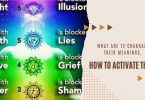“Lord Shiva is known by many names— Bhole Nath, Nataraja, Bhairava, Mahadeva, Vishwanath, Mahayogi, Bhava, and Pashupati. He is the most powerful Hindu deity, and although he is known to be the Supreme Destroyer, it is through him that the world has truly known the power of Yoga and meditation. He is one of the three members of the Hindu Trinity (Brahma, the creator, Vishnu, the preserver, and Shiva, the destroyer). This divine recognition has led to the establishment of Lord Shiva temples without setting up the statues of other deities.
A phallic symbol or “Linga” represents the divine strength and energy of Shiva- the one that truly denotes life on macrocosmic and microcosmic levels. The centrifugal force of the universe has Shiva residing in its core. This is why he is the destructive force. Where there is birth, there is death; Lord Shiva completes the holy circle. For him, death and destruction are inevitable. But it is only through it that life goes on to new birth. Lord Shiva is known to be the supreme force while being oblivious to the chaos of the universe. Bhole Shankar is often seen feeding on opium to numb his dark potential.
Many spiritual beliefs are construed around the qualities and teachings of Shiva. He is celebrated and worshipped in most religions. The beliefs and qualities cannot be expressed in words. It is easy to please Lord Shiva. Legend has it; that even the most infamous demons have managed to please Lord Shiva and gain his blessings. It is another thing altogether that their blessings and power were used in gruesome activities. And it was Shiva Himself who destroyed them eventually because of their sins.”
The Other Half of Shiva
Among the qualities of Mahadeva comes the beautiful bond of Lord Shiva and his consort, Goddess Parvati. Her symbolic representation is a divine lady draped in a red sari Parvati is strength, and this power that she holds is quite the opposite of Shiva. Her power lies in the inner strength, the resilience, the one that she CHOOSES not to exercise. She is known by many names, depending on her form, mood, and intention. She is known by the names of Durga, Shakti, Gauri, Sati, Annapurna, and more. She is known to be the Mother, the significator of strength.
But before she was Goddess Parvati, she was Sati
Sati is the daughter of God Daksha. It is believed that Her father, God Daksha, did not approve of the marital alliance with Shiva. This disapproval led to her disappointment and rage. She sacrificed herself by throwing herself on the fire. The fire was actually a sacred prayer ritual organized by her father. She was already Shiva’s wife by then but could not bear the insult and disrespect of her husband at the event. This led to self-immolation.
Outraged by sight, Lord Shiva created Rudrakali and Virabhadra (two demons) from his mane. They wrecked the ceremony and beheaded Daksha. The other deities intervened and requested Shiva to put an end to the violence. Shiva complied and put life back into Daksha. He further replaced his head with a ram’s head.
It is believed that upon the unfortunate demise of Sati, Lord Shiva renounced his spiritual duties as a member of the Holy Trinity and went into deep meditation. This led to upheaval and disbalance in the world, which led to God being worried. This way, their requests came to fruition and Sati was later reincarnated as Parvati and born to King Himavat, the personification of Heavenly abodes and Himalayan Mountains. She was also River Ganga’s sister. Her reincarnation as Parvati finally led to an eternal alliance with Lord Shiva.
Parvati as Uma
Goddess Parvati is also known as Uma. She is referred to as the Goddess of mountains and Light. Uma imparts morals and virtues to humanity. The true beauty that beholds worldly power is Uma. The name derives from an expression that is a call to stop something. This happened during her penance in a bid to attain Lord Shiva’s unconditional acceptance. While Lord Shiva was pleased by her gesture, her mother kept asking her to stop and not do it. This led to the name “Uma”. U-ma literally translates to her mother’s call for help to stop her.
Parvati as Durga
The embodiment of fierce strength all put together to form untamed energy to destroy evil is Durga. She is the Shakti Roop (Powerful avatar) of Goddess Parvati, which represents sheer chaos and anger. This form is equivalent to the power of 10 Gods put together to fight the demons.
Durga was created when Mahishasura, a demon, terrorized the Gods and deities in the heavens. When the terror turned into wrath, leading to the death of celestial beings, the Gods repeatedly requested Lord Shiva to come to their aid. All these requests went in vain as Shiva was in deep meditation. This is where Goddess Parvati took the form of Mahakali.
It was believed that Mahishasura had the boon of being victorious. He was arrogantly proud of the blessing that no man could ever harm him. His arrogance took over his ego, and he never bothered to think that a woman would be the reason behind his destruction.
Mahakali was created when the celestial beings and deities imparted their powers to her. She already was in the form of Durga Shakti and therefore manifested her powers from Gods. Mahakali is depicted holding ten weapons in each of her hands. That is how she got the name of DashaBhuja; the literal translation is- the one with ten arms. And after the fierce, bloody battle, she destroyed Mahishasura and became Goddess Mahishasura Mardini, translating to the killer of the demon Mahishasura. It is believed that Lord Ram, who defeated Ravana and saved Goddess Sita after battling in among the greatest wars in Hindu Mythology, Ramayana; prayed to Goddess Durga before it.
Wrapping Up
The consort of Lord Shiva, Goddess Parvati, is the power within. The one that controls your universe and reflects in your mind and soul. She is the mother and the destroyer of all toxicities. If she is a nurturer, then she is also a defender.







